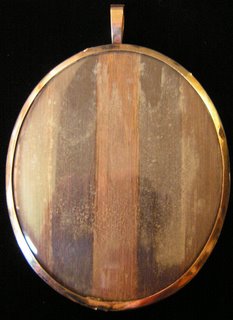Silhouettes
 “Shades are the truest representation that can be given of man” – Johann Lavater, 1804
“Shades are the truest representation that can be given of man” – Johann Lavater, 1804Shades, the old name given to silhouettes, became popular after about 1760 and were an outgrowth of the neoclassical revival. Silhouette artists were extremely influenced by both Johann Lavater and classical Greek art. Lavater, the father of the pseudo-science of physiognomy, believed that one’s internal qualities, emotions, intellect, capacity for achievement, and so forth, could be read from a profile of the face especially as a shade. Essentially physiognomy was the “science” of judging a book by its cover, but it was very popular with the producers and consumers of silhouettes. Ancient Greek black figure vases and red figure vases provided additional sources of inspiration and study for artists. For example, both Charles Rosenberg and Jacob Spornberg produced silhouettes in imitation of these silhouette-like vases. Silhouettes were produced on a variety of media including paper, plaster, and ivory.
Silhouette from Lavater’s treatise on physiognomy illustrating, “A man of business, with more than common abilities. Undoubtedly possessed of talents, punctual honesty, love of order, and deliberation. An acute inspector of men; a calm, dry, determined judge.”

Silhouette painted on plaster and signed “Miers” under the truncation with braided hair surround and hairwork reverse. Unfortunately, cracked vertically. John Miers was the master of delineating the finely detailed diaphanous features of clothing.





0 Comments:
Post a Comment
<< Home